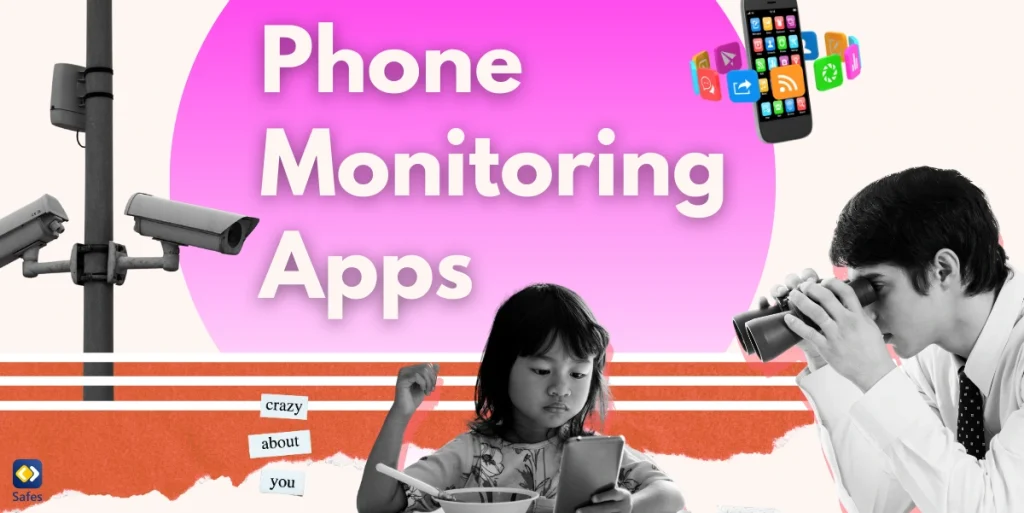While it can be a difficult and sensitive undertaking, disciplining children is a vital part of parenting. Since each child is different, what suits one may not suit another. We will look at a variety of types of discipline in this blog post to assist parents in navigating this challenging environment. You may select the method that most closely matches your parenting style and your child’s personality by being aware of the various techniques.
Download and Start Your Free Trial of the Safes Parental Control App
Positive Discipline
A comprehensive disciplined parenting style, positive discipline teaches kids the tools they need to control their behavior and make better decisions. It places a high emphasis on communication, understanding, and empathy in order to foster a strong parent-child bond rather than punishing.
Establishing limits and expectations in a clear and encouraging manner is the foundation of positive discipline. Parents take use of their children’s errors as an opportunity to mentor, teach, and talk about options. This method helps kids develop empathy, responsibility, and self-control.

Gentle Discipline
Positive discipline is expanded upon by gentle discipline, which emphasizes empathy and respect. It entails guiding kids’ conduct with non-punitive ways. Instead than using punishment as a last resort, gentle discipline aims to meet the emotional needs of children.
Redirecting the kid’s attention to more suitable activities and implementing time-ins, when the parent and child spend time together discussing the conduct, are common methods used by parents for effective discipline. Without using force or terror, the intention is to assist kids in learning self-control and the consequences of their behavior.
Boundary-Based Discipline
Establishing and upholding explicit limits and expectations for children’s conduct is the foundation of boundary-based discipline. This method is frequently linked to authoritative parenting, in which parents exercise hard control while being receptive to their children’s needs.
Boundary-based discipline involves parents setting clear guidelines and persistently enforcing punishments for rule violations. The goal is to foster in kids a feeling of responsibility and an understanding of the effects of their actions. The growth of children can be facilitated by this strategy by offering them a safe and orderly environment.

Behavior Modification
A more systematic kind of discipline called behavior modification uses rewards and penalties to mold a child’s conduct. It is frequently used to treat certain behavioral problems or difficulties. When it comes to behavior modification, parents set up a system of incentives and sanctions to promote good conduct and discourage bad behavior.
This parenting discipline style could work well for changing behavior temporarily, but it might not deal with the underlying issues that lead to the behavior. Achieving a balance between incentives and consequences is crucial in order to avoid depending too much on extrinsic motivation.
Using Parental Control Apps for Discipline
Parental control applications are a strong tool available to parents in the modern digital era. With the help of these applications, parents can keep an eye on and regulate their kids’ internet activity, screen time, and access to particular material. They may be an effective tool for helping parents manage their children’s conduct, but you must use them wisely and keep lines of communication open with your child.
You can monitor your child’s online behavior, put limits on screen time, and block objectionable information with the use of parental control applications. Striking a balance between keeping an eye on things and protecting your kids’ privacy is crucial, though, since too much surveillance may strain the bond between parents and kids. Have frank conversations with your kids about using these applications to make sure they get the rationale for their use.
One of the best parental control apps around right now is Safes, available on multiple platforms including iOS and Android. With Safes you can discipline your child using the following features:
- Manage your child’s screen time
- Set a schedule for disciplining app usage
- Filtering inappropriate keywords from web searches
- Blocking inappropriate URLs
- Tracking your child’s location
Get started with a free trial of Safes now!
Conclusion
There is no one-size-fits-all approach to effective punishment, and what works for one child might not work for another. It’s critical for parents to be adaptable and modify their methods in accordance with the unique demands and personalities of their children. While boundary-based discipline places more emphasis on setting clear expectations and norms, positive and gentle techniques of discipline concentrate on strengthening the bond between parents and children. Apps for parental control and behavior modification can be useful tools for dealing with certain issues, but they should be used in addition to other forms of punishment. At the end of the day, keeping lines of communication open and fostering empathy and understanding within your family are crucial to effective discipline.
Your Child’s Online Safety Starts Here
Every parent today needs a solution to manage screen time and keep their child safe online.
Without the right tools, digital risks and excessive screen time can impact children's well-being. Safes helps parents set healthy boundaries, monitor activity, and protect kids from online dangers—all with an easy-to-use app.
Take control of your child’s digital world. Learn more about Safes or download the app to start your free trial today!




